Kpop Second Generation Explained: 2003-2012
Explore K-pop's Second Generation (2003-2012), featuring iconic groups like Big Bang, Girls' Generation, and Super Junior that shaped global K-pop trends.
2nd Generation of K-Pop Explained: 2003-2012
The kpop second generation is often heralded as the golden age of the genre, a period marked by explosive growth, iconic music, and a global spread that set the stage for K-Pop's current worldwide dominance. This era, spanning from 2003 to 2012, saw the emergence of legendary groups and solo artists who pushed the boundaries of music, fashion, and cultural influence. In this comprehensive exploration, we'll delve into the key aspects that define the second generation of K-pop, including its timeline, musical styles, fashion trends, conceptual innovations, global impact, and the birth of fan culture elements like lightsticks and photocards.
Check out article for a brief overview of the 4 Generations of K-Pop Explained.
When Did the kpop second generation Begin and End?
The Beginning
The beginning of the 2nd generation of K-Pop can be traced back to the early 2000s, a time when the genre was starting to gain momentum beyond South Korea. While the exact starting point is debated, 2003 is widely recognized as the onset of this era, marked by the debut of TVXQ (DBSK), a group that would become one of the most influential acts of the time. Their debut single "Hug" captured the hearts of fans, and their success paved the way for other groups.
Another significant milestone was the debut of BoA, who had already achieved substantial success in Japan and other Asian markets. Her influence helped bridge the gap between K-Pop and international audiences, demonstrating the potential for Korean artists to succeed abroad.
The End
The kpop second generation is generally considered to have concluded around 2012. This endpoint is characterized by the rise of new groups and the decline or transformation of many 2nd generation acts. The debut of EXO in 2012, for instance, marked the beginning of the 3rd generation, as did the increasing prominence of groups like BTS and GOT7, who would dominate the K-Pop scene in the years to follow.
Defining the 2nd Generation: What Sets It Apart?
The 2nd generation of K-Pop is defined by several key characteristics that distinguish it from both its predecessor and successor eras. These defining traits include the emergence of idol groups, the influence of the internet, musical diversity, innovative marketing strategies, and the rise of Hallyu (the Korean Wave).
Emergence of Idol Groups
One of the most defining features of the 2nd generation is the proliferation of idol groups. While the 1st generation had its share of successful groups, the 2nd generation saw a dramatic increase in the number and popularity of idol groups. These groups were meticulously trained and managed by entertainment companies, which played a crucial role in their success.
Some of the most iconic 2nd generation groups include:
-
TVXQ: Debuting in 2003, TVXQ quickly became one o
f the most popular boy groups in Asia. Their powerful vocals, synchronized choreography, and charismatic performances set a new standard for K-Pop idols.
-
Super Junior: Debuting in 2005, Super Junior became known for their versatility and large membership, which allowed them to explore various musical styles and sub-units.
-
Girls' Generation (SNSD): Debuting in 2007, Girls' Generation became one of the most successful girl groups in K-Pop history. Their catchy songs, stunning visuals, and strong fanbase cemented their place in the industry.
-
Big Bang: Debuting in 2006, Big Bang brought a fresh, hip-hop-influenced sound to K-Pop. Their innovative music and fashion sense made them trendsetters in the industry.
-
Wonder Girls: Debuting in 2007, Wonder Girls achieved international success with their hit song "Nobody," becoming one of the first K-Pop groups to break into the American market.
These groups, along with many others, played a crucial role in shaping the sound and style of 2nd generation K-Pop.
Influence of the Internet
The rise of the internet played a significant role in the success of the kpop second generation.

Social media platforms, YouTube, and online fan communities allowed K-Pop idols to reach a global audience. Fans from around the world could easily access music videos, performances, and behind-the-scenes content, fostering a sense of connection with their favorite idols.
YouTube, in particular, became a powerful tool for K-Pop artists. Music videos went viral, reaching millions of viewers and attracting new fans. This digital exposure helped K-Pop transcend geographical boundaries and establish a global presence.
Musical Diversity
The kpop second generation was marked by a diverse range of musical styles. While earlier K-Pop had focused primarily on pop and dance music, the 2nd generation saw the incorporation of various genres, including hip-hop, R&B, rock, and electronic music. This musical diversity allowed K-Pop to appeal to a broader audience and stay fresh and innovative.
For example, Big Bang's music often blended hip-hop and electronic elements, while SHINee explored contemporary R&B and funk influences. The willingness to experiment with different genres contributed to the unique and dynamic sound of 2nd generation K-Pop.
Innovative Marketing Strategies
Entertainment companies during the 2nd generation became increasingly adept at marketing their artists. They employed a range of strategies to build and maintain the popularity of their idols, including:

-
Variety Shows: K-Pop idols frequently appeared on variety shows, showcasing their personalities and talents beyond singing and dancing. Shows like "Star Golden Bell," "We Got Married," and "Running Man" became platforms for idols to connect with fans.
-
Reality Programs: Many groups had their own reality programs, providing fans with an inside look at their daily lives and activities. These shows helped humanize the idols and strengthen the fan-idol relationship.
-
Fan Meetings and Concerts: Regular fan meetings and concerts allowed idols to interact with their fans in person. These events were crucial for building a loyal and dedicated fanbase.
-
Merchandising: From albums and posters to lightsticks and clothing, K-Pop companies capitalized on merchandise sales. Fans eagerly purchased these items to support their favorite idols.
These marketing strategies not only boosted the visibility of K-Pop idols but also created a sense of community and loyalty among fans.
Rise of Hallyu (The Korean Wave)
The kpop second generation played a pivotal role in the rise of Hallyu, or the Korean Wave. Hallyu refers to the global popularity of South Korean culture, including music, television dramas, movies, and fashion. K-Pop was at the forefront of this cultural phenomenon, drawing international attention and admiration.
The popularity of K-Pop during this era can be attributed to several factors:
-
Catchy Music and High-Quality Production: The catchy melodies, high-energy choreography, and polished production values of K-Pop songs made them appealing to a wide audience.
-
Idol Training and Performance Skills: The rigorous training programs undergone by K-Pop idols ensured that they were not only talented singers but also skilled dancers and performers. This level of professionalism impressed fans worldwide.
-
Engagement with International Fans: K-Pop idols and companies actively engaged with international fans through social media, fan events, and world tours. This direct interaction helped cultivate a loyal global fanbase.
-
Cross-Cultural Appeal: K-Pop's blend of Western and Korean influences made it accessible and appealing to people from diverse cultural backgrounds.
As a result, K-Pop gained a foothold in various regions, including Asia, Europe, North America, and Latin America. The kpop second generation idols were instrumental in spreading Korean culture and paving the way for the future global success of K-Pop.
Musical Evolution: The Soundtrack of the 2nd Generation
The music styles of the 2nd generation of K-pop were diverse and innovative, setting new trends and pushing boundaries. Some of the key styles included:

-
Pop and Dance: Upbeat, catchy pop songs with intricate choreography were a staple of this era. Groups like Girls' Generation and Wonder Girls released iconic tracks such as "Gee" and "Nobody," which became instant hits.
-
Hip Hop and R&B: Hip hop and R&B influences became more prominent, with groups like Big Bang and 2NE1 incorporating these styles into their music. Songs like Big Bang's "Fantastic Baby" and 2NE1's "I Am the Best" showcased this trend.
-
Ballads: Emotional ballads remained popular, with artists like TVXQ and Super Junior releasing heartfelt songs that highlighted their vocal prowess. Tracks like TVXQ's "Love in the Ice" and Super Junior's "Sorry, Sorry - Answer" are prime examples.
-
Electronic and Synth-pop: The use of electronic sounds and synth-pop elements became more common, giving songs a futuristic feel. SHINee's "Lucifer" and f(x)'s "Electric Shock" exemplify this trend.
-
Rock and Alternative: Some groups experimented with rock and alternative sounds, adding diversity to the K-pop landscape. FT Island and CNBLUE were notable bands that brought rock elements into the mainstream.
The Fashion Revolution: Iconic Styles of the 2nd Generation
Fashion played a crucial role in the kpop second generation, with idols setting trends and becoming style icons. Key aspects of 2nd generation fashion included:

-
Colorful and Bold Outfits: Idols often wore eye-catching, colorful outfits that stood out on stage and in music videos. Bright colors, bold patterns, and unique designs were common.
-
Hairstyles and Hair Colors: Creative and ever-changing hairstyles were a hallmark of this era. Idols frequently dyed their hair in various colors, ranging from blonde and red to blue and pink. Iconic hairstyles like Taeyang's mohawk and G-Dragon's ever-evolving hair became famous.
-
Streetwear and Urban Fashion: Hip hop and streetwear influences were prevalent, with many idols sporting oversized clothing, snapbacks, and sneakers. Brands like Adidas, Nike, and Supreme became popular within the K-pop community.
-
Glamorous and Chic Looks: For performances and award shows, idols often donned glamorous, high-fashion outfits. Girls' Generation's elegant dresses and Super Junior's tailored suits exemplified this trend.
-
Accessories and Makeup: Accessories such as jewelry, hats, and sunglasses were used to enhance outfits. Makeup trends included bold eyeliner, vibrant eyeshadows, and glossy lips, helping idols create distinct looks.
Conceptual Creativity: Themes and Visuals in the 2nd Generation
Concepts played a significant role in differentiating groups and making comebacks memorable. The kpop second generation was known for its diverse and imaginative concepts:

-
Cute and Innocent: Many girl groups adopted cute and innocent concepts, characterized by pastel colors, frilly outfits, and cheerful music. Songs like Girls' Generation's "Gee" and Wonder Girls' "Tell Me" are prime examples.
-
Sexy and Mature: Some groups embraced a more mature and sexy image, using provocative outfits and sultry choreography. Brown Eyed Girls' "Abracadabra" and After School's "Bang!" showcased this concept.
-
Edgy and Fierce: Edgy and fierce concepts became popular, especially among girl groups like 2NE1 and boy groups like Big Bang. These concepts featured bold fashion, powerful choreography, and strong personas, as seen in 2NE1's "I Am the Best" and Big Bang's "Fantastic Baby."
-
Fantasy and Sci-Fi: Fantasy and sci-fi concepts allowed for creative storytelling and visually stunning music videos. SHINee's "Lucifer" and EXO's debut concept with supernatural powers are notable examples.
-
Retro and Nostalgic: Some groups drew inspiration from past decades, incorporating retro elements into their music and fashion. Wonder Girls' "Nobody" and T-ara's "Roly-Poly" paid homage to the '60s and '70s, respectively.
Beyond Asia: The Global Expansion of K-Pop in the 2nd Generation
The kpop second generation played a pivotal role in spreading the genre beyond Asia and into the global mainstream. Several factors contributed to this expansion:
-
International Tours and Concerts: Groups began to tour internationally, performing in countries across Asia, North America, Europe, and beyond. These tours helped build a global fanbase and increased K-pop's visibility.
-
Language Adaptations: Many groups released songs in multiple languages, including English, Japanese, and Chinese, to appeal to a broader audience. BoA, TVXQ, and Girls' Generation were pioneers in this approach, releasing Japanese albums that achieved significant success.
-
Social Media and Online Platforms: The rise of social media platforms like YouTube, Twitter, and Facebook allowed K-pop groups to reach international fans more easily. Viral videos, fan interactions, and online communities played a crucial role in spreading K-pop's influence.
-
Collaborations with Western Artists: Collaborations with Western artists helped introduce K-pop to new audiences. For example, Wonder Girls toured with the Jonas Brothers, and Big Bang's G-Dragon collaborated with artists like Flo Rida and Missy Elliott.
-
Media Exposure: K-pop gained exposure through appearances on international TV shows, award ceremonies, and festivals. Performances on shows like "The Late Show with David Letterman" and appearances at events like the MTV Europe Music Awards brought K-pop into the global spotlight.
Fan Culture Innovations: The Birth of Lightsticks and Photocards
The 2nd generation saw the creation and popularization of lightsticks and photocards, two iconic aspects of K-pop fandom culture:

-
Lightsticks: Lightsticks, handheld LED devices used by fans to show support during concerts, became a defining feature of K-pop fandom. Each group had its unique lightstick design, often incorporating the group's logo and colors. These lightsticks created a visually stunning sea of lights at concerts, symbolizing unity and support. Notable lightsticks from this era include Big Bang's crown-shaped lightstick and Girls' Generation's pink heart-shaped lightstick.
-
Photocards: Photocards, collectible cards featuring individual members, became highly sought-after merchandise. These cards were often included in albums and special editions, encouraging fans to buy multiple copies to collect them all. Photocards featured various poses, outfits, and concepts, making them valuable keepsakes for fans. The popularity of photocards also led to the creation of trading and collecting communities, further enhancing fan engagement.
Which Bands Belong in the kpop second generation?
Several iconic bands define the 2nd generation of K-Pop. Here are some of the most influential ones:
BOY GROUPS:
- 2PM
- SHINee
- SS301
- BIG BANG
- Super Junior
- TVXQ!
GIRL GROUPS:
- Girls’ Generation
- Wonder Girls
- 2NE1
- Kara
- A-pink
- T-ara
The kpop second generation was a transformative period that laid the foundation for the genre's global dominance. With its innovative music, iconic fashion, diverse concepts, and dedicated fan culture, this era created a lasting legacy that continues to influence K-pop today. As we look back on the golden age of K-pop, it's clear that the 2nd generation was instrumental in shaping the vibrant and dynamic industry we know and love.




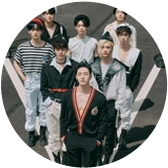
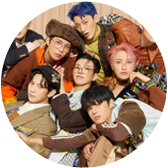
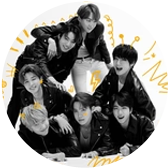
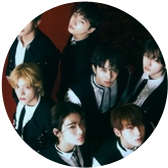
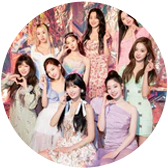
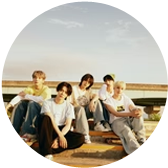
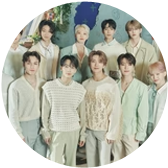
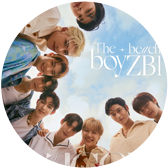



 Social media platforms, YouTube, and online fan communities allowed K-Pop idols to reach a global audience. Fans from around the world could easily access music videos, performances, and behind-the-scenes content, fostering a sense of connection with their favorite idols.
Social media platforms, YouTube, and online fan communities allowed K-Pop idols to reach a global audience. Fans from around the world could easily access music videos, performances, and behind-the-scenes content, fostering a sense of connection with their favorite idols.








